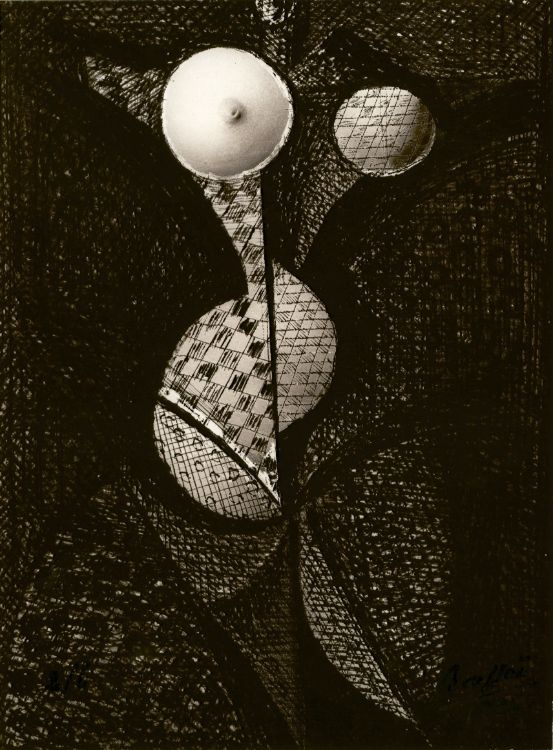Brassaï’s Transmutations are an extension of the earlier multimedia experiments of the Dadaists and Surrealists in photomontage and collage. The influence of Cubism, examples of which Brassaï would have witnessed in Picasso’s studio, is also evident in the fragmentation of form and multi-faceted presentation of objects. Engraving is also related to Brassaï’s interest in graffiti and alternative visual languages. The Surrealists practised automatic writing to divulge the workings of the subconscious whilst in trance-like states and Brassaï’s Transmutations are similar in their attempt to access an alternative reality below the surface of the photographic image. Describing the series, he said that he was compelled to ‘reveal the hidden figure which lay in each mental picture’. Taking the somnambulatory approach of the Surrealists, Brassaï explained: ‘Almost as a sleep-walker, I witnessed these destructions and formations. The dislocated parts of the photographs reorganised themselves into new combinations.’ In Femme-Fruit, Brassaï has reworked a photograph of a female nude so vigorously that only a breast is still distinguishable but biomorphic shapes remain to outline the rudiments of the female body. Taking on the sadomasochistic overtones of the Surrealists, Brassaï declared, ‘I cut flesh as one carves a block to break loose the figure which it conceals’.
During his Surrealist period, Picasso was obsessed by the potential transformation of the human body into inanimate objects. He discussed with Brassaï how the female body could appear transformed into a piece of fruit or vase when viewed close up, telling him that he was surprised when he first noticed ‘how much the fruit of the coconut palm – the largest fruit there is – resembles the lower torso of a woman’. Picasso noticed that in some of Brassaï’s nudes the presence of ‘gooseflesh’ evoked the skin of an orange and Brassaï found similarities between the female body and natural forms. His entire approach to photography was caught up in the potential of the medium for poetic metaphor and the Transmutations series shows this principle in Brassaï’s most experimental format
